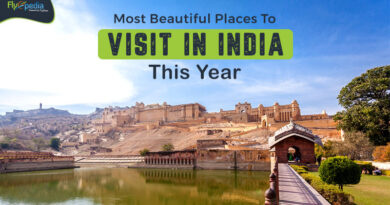Top National Wildlife Parks to Visit in India
India boasts more than 80 national wildlife parks dotted all over the country, filled to the brim with hundreds of bird and animal species, as well as a plethora of flora.
They span over large expanses of land and encompass a wide range of climatic and geographical diversity- from the lofty Himalayan mountain ranges to the lush green forests of the West, from the 4600 miles of coastline to the barren Thar Desert.
Even though the forest cover of India stands only at about 22%, the nation houses approximately 10% of the world’s wildlife species.
The country’s first national Park, now renowned as the Jim Corbett National Park, was created in 1936. Till 1970, there were only 5 national parks in India. However, in 1971, appalling news was reported that only 1800 wild tigers were left in India.
The Wildlife Protection Act and Project Tiger significantly increased India’s Tiger population.
As of today, there are 101 National Parks and 51 Tiger Reserves currently in India. These work tirelessly to protect and preserve the biodiversity that consists of 70% of the world’s wild tigers, white lions, sloth bears, various bird species along with other flora and fauna.
If you’re an avid wildlife lover, find cheap flights, buy cheap air tickets to India after you compare flight prices and visit these picturesque National Parks.
1) Kanha National Park
Spanning over 363 square miles, Kanha National Park is an absolute paradise for nature lovers.Central India considers this the largest National Park and manages it well, blooming with wildlife species.
Thanks to efforts cracking down on poaching, it houses around 500 tigers in it now and is a great place to see them in their habitat.
Apart from that, other species you need to check out there are leopards, sloth bears, sambar deer and barasingha/ swamp deer.
Kanha’s breeding program played a major role in saving Barasingha from extinction in Bangladesh and Pakistan. Kanha National Park also provided for Rudyard Kipling’s famous novel, The Jungle Book.
2) Bandhavgarh National Park
Bandhavgarh National Park is a popular spot among wildlife photographers and enthusiasts because of its spectacular setting.
Situated in the heart of Vindhya Hills in Madhya Pradesh, it boasts a ruined ancient fort as its backdrop, along with verdant green valleys and hilly terrains. It spans over an area of 40 square miles with a buffer area of 154 square miles.
Apart from being the abode of magnificent Bengal Tigers, you can also find 36 other mammals including leopards, dhole, chital and nilgai/ blue bulls, more than 150 species of birds, and about 80 species of butterflies.
3) Kaziranga National Park
Assam is home to one of the finest National Wildlife Parks of the world, Kaziranga. Mostly consisting of undisturbed wet grasslands, pools of the Bramhaputra Valley floodplains and swamps, it is the home of world’s largest population of one- horned rhinos.
Being one of the UNESCO Natural Heritage sites in India, it has an amazing successful conservation story after saving the one horned rhinoceros from the brink of extinction.
The one horned rhino were reported to be only 12 in 1903, and now there are over 1800 in population. Other endangered species staying here include approximately 40 other mammals like the Bengal tigers, Asian elephants, sloth bears, Gangetic dolphins, and many migratory birds.
It is also the only park in India where elephant- backed safaris are still tolerable as it is the only way to observe wildlife in the grasslands.
4) Nagarhole National Park
Also known as Rajiv Gandhi National Park, Nagarhole is located in the South Indian state of Karnataka. It is part of the Nilgiri Biosphere Reserve with the Kabini River running between Bandipur and Nagarhole.
Being Karnataka’s leading National Park, it offers some of the most incredible luxury safari lodges on the Kabini side of Nagarhole.
The Maharaja of Mysore formerly used it as hunting grounds and declared it as a Tiger Reserve in 1999.
The Park has the largest concentration of herbivores in the world as well as the largest congregation of Asiatic elephants in the world. It also serves as the abode of tigers, leopards, sloth bears and dhole.




